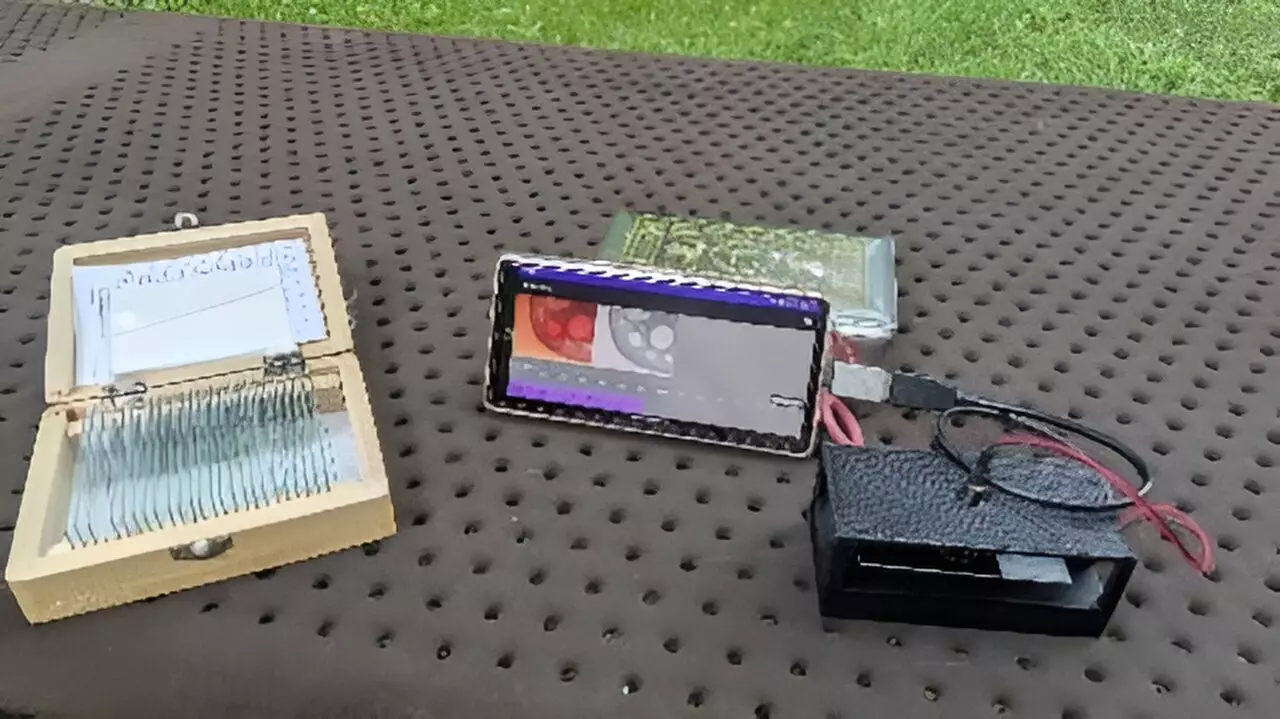The world of microscopy has long been dominated by expensive, bulky equipment that often confines scientific exploration to well-funded labs or specialty clinics. However, a transformative leap has been made with the introduction of a lightweight, smartphone-based digital holographic microscope that promises to democratize access to high-quality 3D imaging. Researchers are breaking the barriers that tether advanced imaging techniques to cumbersome machinery, positioning this groundbreaking device as a frontrunner for educational and medical applications in resource-limited environments.
This innovative microscope marries sophisticated imaging technology with everyday consumer devices, effectively shifting the paradigm of how we engage with biological samples. Utilizing a smartphone not only makes the device cost-effective but also significantly enhances its portability, thus broadening the scope of potential uses—from classrooms to remote healthcare settings.
Mechanics Behind the Magic: How It Works
At the heart of this portable marvel is a technique known as digital holography, which leverages the interference patterns produced when light interacts with samples. In a conventional setup, this process requires complex optical arrangements and powerful computers to achieve meaningful data. However, the creators of the smartphone microscope have ingeniously simplified the optical architecture using a 3D-printed system. Not only does this reduce costs, but it also eliminates the dependency on cumbersome laptops, providing flexibility for outdoor and field applications.
Employing a calculation method known as band-limited double-step Fresnel diffraction, the device efficiently distills the required data points needed for fast hologram reconstruction. This nobility of computational efficiency allows researchers and clinicians to access 3D views of microscopic samples in nearly real-time. Observers can easily pinch to zoom and scrutinize details on their smartphone screens, making complex imaging comprehensible and interactive.
Widespread Applications: From Classrooms to Clinics
The implications of this technology are profound. For educational institutions, this microscope can facilitate an engaging learning environment where students explore microscopic life forms and biological structures firsthand. One can visualize cells or tissues as they are learned in classroom theories, transforming abstract concepts into tangible experiences.
Moreover, the device holds immense promise for healthcare, especially in developing regions where traditional diagnostics tools are scarce or prohibitively expensive. It paves the way for point-of-care diagnostics, such as identifying sickle cell disease, which could bridge the substantial healthcare access gap prevalent in various parts of the globe. With this tool, doctors can use their smartphones to diagnose conditions swiftly and accurately, even in challenging resource environments.
Challenges in Real-Time Processing and Future Improvements
Despite this promising advancement, the journey isn’t without its hurdles. Previous attempts to create smartphone-based holographic microscopes have stumbled due to the limitations in processing power and memory of mobile devices. The challenge of real-time image positioning and reconstruction remains at the forefront of research endeavors.
As the current researchers confront these issues, they are exploring the integration of deep learning algorithms to refine image quality further. By using artificial intelligence to analyze and eliminate superfluous artifacts typically generated during hologram reconstruction, it is possible that future iterations of this microscope will offer even more clarity and precision in imaging, enhancing its overall efficacy for both educational and clinical use.
A New Paradigm in Microscopy: Implications for Science and Accessibility
The advent of this smartphone microscope could redefine scientific research and education as we know it. Its low-cost, high-quality capabilities directly align with the numerous efforts to democratize science—offering vast opportunities for budding scientists, students, and healthcare providers alike. The technology might serve as a springboard for innovation, inspiring new applications in various fields, ranging from environmental studies to telemedicine.
As the researchers strive to evolve their technology, it becomes clear that the real beauty lies not just in the microscope’s capabilities but also in its potential to bridge the accessibility divide. The combination of advanced technology and universal smartphone usage marks a pivotal shift in how we perceive and engage with microscopic worlds. Thus, this innovation signals not merely a technical achievement but a transformative movement toward inclusivity in science and healthcare.

